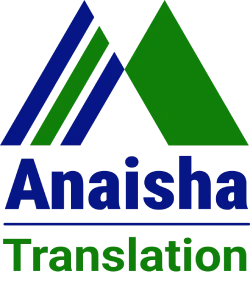Certified Dutch Translation in Chennai – Embassy, HRD & MEA Approved
Anaisha Translation provides certified Dutch to English and English to Dutch translation services in Chennai for immigration, student visas, university admissions, legal documentation, technical sectors, medical files, and corporate requirements. All translations are prepared by qualified Dutch linguists who follow official formats required by Netherlands Embassy, Belgium Embassy, MEA Apostille, HRD departments, and global verification bodies.
Whether you need certified Dutch translation in Chennai for studying in the Netherlands/Belgium, job seeker visas, PR processing, business contracts, legal cases, medical reports, or technical manuals — we guarantee 100% accuracy and international acceptance. Soft copies are delivered instantly and sealed hard copies are shipped through courier across Chennai including T Nagar, Velachery, OMR, Tambaram, Anna Nagar, Adyar, Ambattur, and nearby regions.
Why Choose Our Certified Dutch Translation in Chennai?
Native & Certified Dutch Linguists
Our expert Dutch translators specialize in:
- Dutch → English Certified Translation
- English → Dutch Certified Translation
- University, APS & Academic Translations
- Visa & Immigration Documentation
- Legal & Court Documentation
- Medical Reports & Hospital Files
- Technical, Engineering & IT Documentation
- Corporate & Financial Translations
100% Embassy, HRD & MEA Acceptance
Our certified Dutch translations comply with:
- Netherlands Embassy – New Delhi
- Belgium Embassy – New Delhi
- MEA Apostille – Hague Convention Countries
- Tamil Nadu HRD / State Government Departments
- Universities & Visa Centers Worldwide
- Court & Judicial Authorities
- Corporate HR & International Companies
Fastest Dutch Translation Service in Chennai
- Standard Delivery – 24–48 Hours
- Express – 12–24 Hours
- Super Express – 6–12 Hours (Urgent)
Ideal for urgent embassy appointments, student visa deadlines, court filings, and corporate submissions.
Documents We Translate
We translate all major Dutch and English documents used for immigration, academics, legal filings, medicine, engineering, research, and business operations.
Documents We Translate – Table
| Document Type | Examples | Certification |
|---|---|---|
| Legal Documents | Court Orders, Contracts, POA, Affidavits, FIR | Notary + Embassy Format + MEA |
| Personal Certificates | Birth, Marriage, Divorce, Death Certificates, PCC | Notary + Embassy Format |
| Educational Documents | Degrees, Diplomas, Transcripts, Mark Sheets | HRD + MEA + Embassy (if needed) |
| Medical Records | Lab Reports, Prescriptions, Clinical Notes | Hospital + Embassy Format |
| Technical Documents | Manuals, Patents, SOPs, IT Specifications | ISO Certified Technical Translators |
Industries We Serve in Chennai
We support Dutch translation requirements across all major sectors:
- Education & APS Submissions
- IT & Software (OMR/Chennai IT Corridor)
- Legal Firms & Judicial Bodies
- Shipping, Logistics & Marine Trade
- Manufacturing & Engineering Sector
- Healthcare & Medical Tourism
- Corporate & MNCs
- Import–Export Companies
- Banking & Finance
Industry-specific terminology ensures high accuracy.
Security & Confidentiality
All translations undergo encrypted processing, NDA protection, and secure file management systems. Your medical, legal, corporate, and academic documents remain 100% confidential.
Certified Dutch Translation & Attestation Process
Our attestation procedure ensures acceptance in the Netherlands, Belgium, and all EU countries.
Attestation Process – Table
| Step | Process |
|---|---|
| Step 1 – Translation | Certified Dutch translator prepares accurate translation. |
| Step 2 – Certification | Notary + Embassy Format + HRD/MEA if applicable. |
| Step 3 – Attestation | Notary → TN State Govt → MEA → Embassy |
| Step 4 – Legalisation | Accepted internationally for visas & academics |
Frequently Asked Questions
Are your Dutch translations accepted by the Netherlands Embassy?
Yes — we follow Netherlands/Belgium Embassy and MEA guidelines strictly.
Do you offer urgent Dutch translation in Chennai?
Yes — 12–24 hr express and 6–12 hr super express delivery options.
Do you provide courier delivery of hard copies?
Yes — courier-only delivery across Chennai and Tamil Nadu.
Chennai Locations We Serve – Courier Only
T Nagar, Velachery, OMR, ECR, Anna Nagar, Tambaram, Adyar, Ambattur, Egmore, Vadapalani, Porur, and all Chennai areas (courier-only).
About Our Dutch Translation Service
Anaisha Translation is India’s trusted provider of Dutch–English certified translations, delivering accurate, secure, and embassy-approved documents for immigration, academics, legal, medical, and technical needs across Chennai and Tamil Nadu.
Contact Us
Email: info@anatranslation.com
Phone: 9100392160
WhatsApp: 9100392160
Website: www.anatranslation.com

